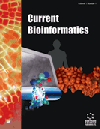
Full text loading...

Drug synergism may occur when two or more drugs are used in combination. Synergistic drug pairs can enhance efficacy and reduce drug dosage and side effects. Therefore, employing computational methodologies to identify specific synergistic drug combinations for clinical application is of significant importance.
We proposed a multiple kernel-based non-negative matrix factorization, MK-NMF, specifically for mining specific synergistic drug pairs in cell lines. In this method, we treated the features of drug pair space and cell line space in the form of two kernel matrices. We incorporated feature kernel matrices into the matrix factorization process.
MK-NMF achieved an area under the curve (AUC) of 0.884 and an area under the precision versus recall curve (AUPR) of 0.537 on the NCI ALMANAC dataset. Both measures were more than a 5% improvement over the previous matrix factorization model. MK-NMF had good robustness with the missing input data. Its performance was stable when the amount of matrix data input was at least 40%. Literature and experimental verification confirmed some of our predictions.
The increase in data volume and the introduction of more high-quality features will further enhance the performance of MK-NMF. Single-drug response data will help address the challenge of predicting synergistic combinations of new drugs.
MK-NMF could assist medical professionals in rapidly screening synergistic drug combinations against specific cancer cell lines. The source code of MK-NMF is freely available at https://github.com/XDRFDH/MK-NMF.

Article metrics loading...

Full text loading...
References


Data & Media loading...
Supplements